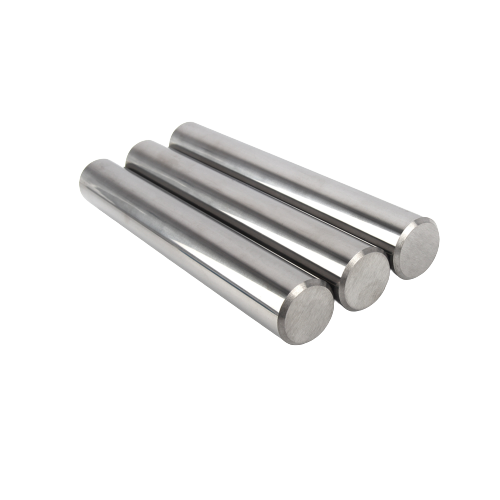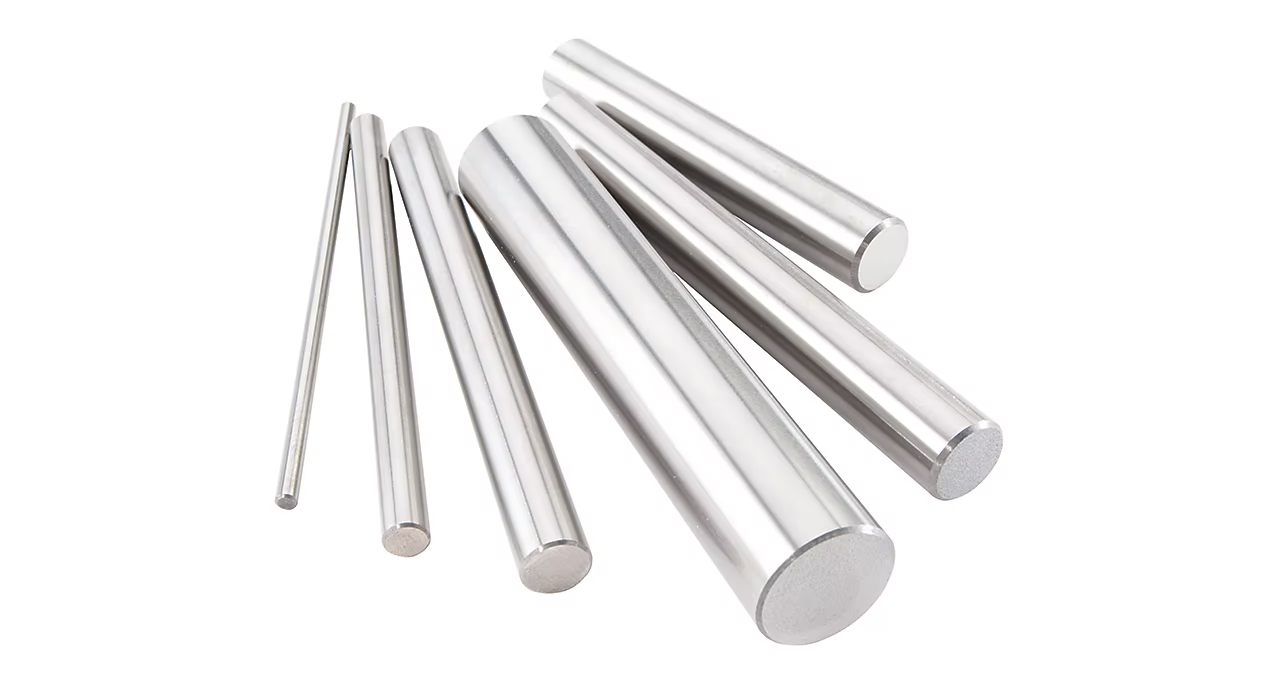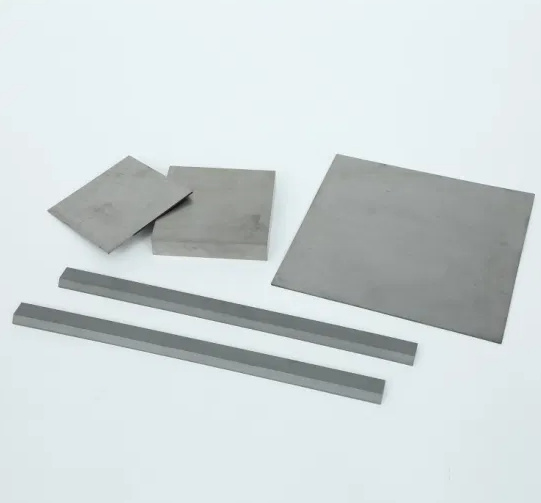Когда речь идет о резке и формовке твердых материалов, твердосплавные пластины являются чемпионами отрасли. Но что делает Китай твердосплавные вставки такой особенный? Как выбрать подходящую? Давайте погрузимся в это обширное руководство, где мы расскажем все, что вам нужно знать о китайских твердосплавных вставках. От типов и областей применения до свойств материалов и подробностей о поставщиках - у нас есть все, что вам нужно знать.
Обзор китайских твердосплавных вставок
Китай стал ведущим производителем твердосплавных пластин, известных своим высоким качеством и конкурентоспособными ценами. Эти пластины незаменимы в процессах обработки для резки, придания формы и сверления различных материалов, включая металлы, пластики и древесину. Они обладают превосходной твердостью, износостойкостью и жаропрочностью, что делает их незаменимыми в различных отраслях промышленности - от автомобильной до аэрокосмической.
Виды твердосплавных вставок из Китая
Чтобы ориентироваться в широком разнообразии доступных твердосплавных пластин, важно понимать различные типы и особенности их применения. Вот удобная таблица, которая поможет вам начать:
| Тип вставки | Описание | Приложения |
|---|---|---|
| Токарные вставки | Предназначены для общих токарных работ. Включает такие формы, как CNMG, DNMG, TNMG. | Токарные работы по обработке металлов. |
| Фрезерные вставки | Используется во фрезерных станках для создания канавок, пазов и других форм. | Фрезерные работы, пазование. |
| Буровые вставки | Специально разработан для сверления отверстий с высокой точностью. | Буровые и расточные работы. |
| Вставки для обработки канавок | Предназначен для создания канавок и вырезов на поверхностях. | Обработка канавок, разделение на части. |
| Резьбонарезные вставки | Используется для создания внутренней и внешней резьбы с высокой точностью. | Резьба в процессах механической обработки. |
| Вставки для обработки деталей | Предназначен для разделения или отрезания деталей. | Операции расставания. |
| Паяные вставки | Вставки, припаянные к держателю инструмента для специальных применений. | Различные операции механической обработки. |
| Индексируемые вставки | Можно поворачивать и индексировать, чтобы использовать несколько режущих кромок. | Универсальное применение в различных операциях. |
| Вставки с покрытием | Покрытие для повышения производительности и долговечности. | Высокоскоростная обработка, повышенная износостойкость. |
| Вставки без покрытия | Пластины из чистого карбида без какого-либо покрытия, идеально подходят для работы с более мягкими материалами. | Обработка общего назначения. |
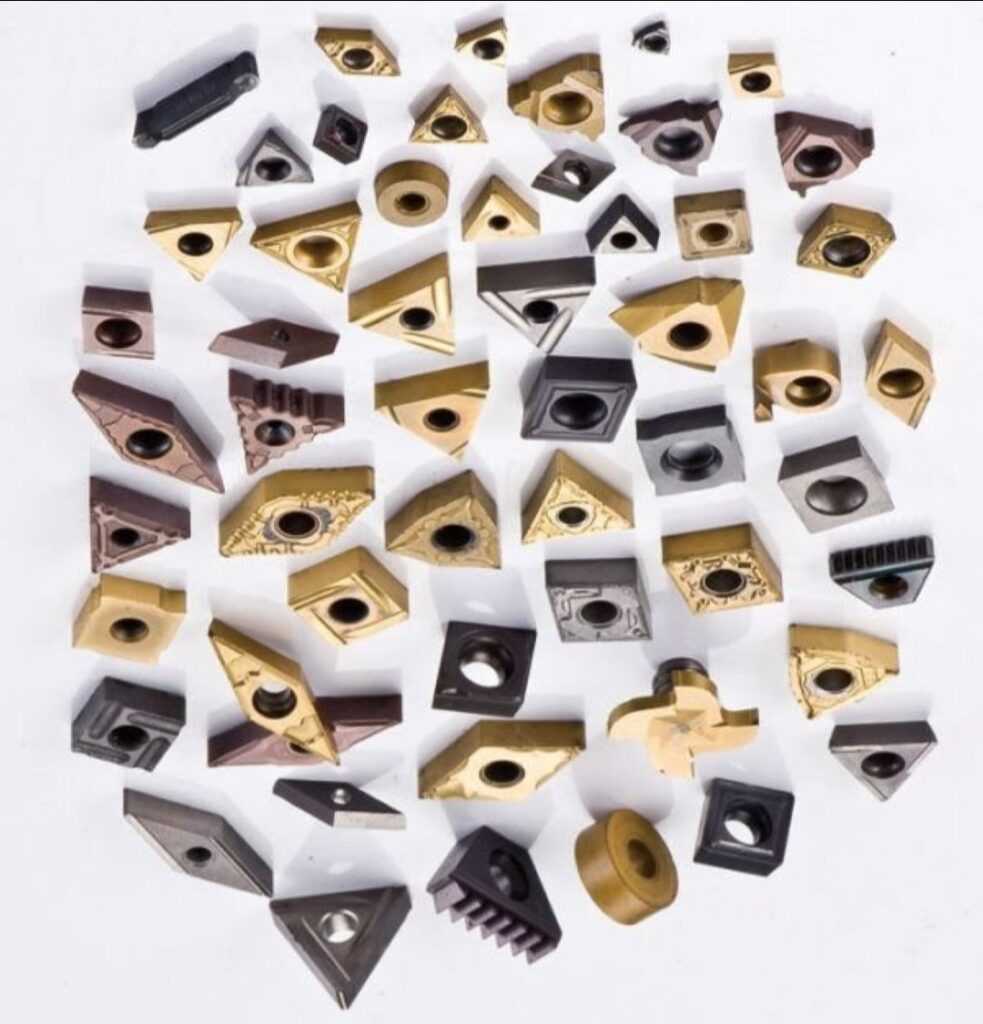
Применение Китай Твердосплавные вставки
Твердосплавные вставки из Китая используются во множестве отраслей промышленности. Вот как различные типы вставок применяются в различных областях:
| Промышленность | Приложение | Тип вставки |
|---|---|---|
| Автомобильная промышленность | Детали двигателя, компоненты трансмиссии | Токарная обработка, фрезерование, сверление |
| Аэрокосмическая промышленность | Детали самолетов, компоненты шасси | Фрезерование, точение, обработка пазов |
| Медицина | Хирургические инструменты, имплантаты | Прецизионное фрезерование, сверление |
| Нефть и газ | Буровое оборудование, компоненты трубопроводов | Резьба, точение |
| Электроника | Печатные платы, корпуса | Микрофрезерование, прецизионное сверление |
| Строительство | Детали тяжелого оборудования, конструктивные элементы | Токарная обработка, фрезерование |
| Деревообработка | Режущие инструменты, инструменты для формования | Специальные пластины для резки древесины |
| Металлообработка | Различные металлические детали и инструменты | Токарные и фрезерные работы общего назначения |
Свойства материала твердосплавных вставок из Китая
Понимание свойств материала твердосплавных пластин имеет решающее значение для выбора подходящей пластины для ваших нужд:
| Недвижимость | Описание |
|---|---|
| Твердость | Очень тяжелый, обычно выше 90 HRA. |
| Жесткость | Высокая прочность, позволяющая выдерживать механические удары и нагрузки. |
| Износостойкость | Превосходная износостойкость обеспечивает долговечность и стабильную работу. |
| Термостойкость | Выдерживает высокие температуры без потери твердости и прочности. |
| Теплопроводность | Эффективная теплопроводность способствует отводу тепла во время обработки. |
| Химическая устойчивость | Устойчив к окислению и другим химическим реакциям. |
Состав, свойства, характеристики
Состав и свойства твердосплавных пластин играют значительную роль в их производительности:
| Состав | Свойства | Характеристики |
|---|---|---|
| Карбид вольфрама (WC) | Высокая твердость, износостойкость | Идеально подходит для общего применения. |
| Кобальт (Co) | Действует как связующее для карбида вольфрама | Повышает прочность и термостойкость. |
| Карбид титана (TiC) | Придает дополнительную твердость и износостойкость | Повышает производительность при высокоскоростной обработке. |
| Карбид тантала (TaC) | Повышает прочность и твердость | Используется в тяжелых условиях эксплуатации. |
| Никель (Ni) | Действует как дополнительное связующее вещество | Повышает коррозионную стойкость. |
| Карбид хрома (CrC) | Повышает износостойкость и твердость | Подходит для использования при высоких температурах. |
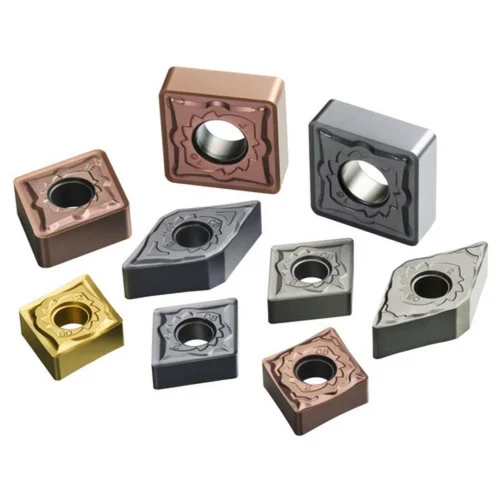
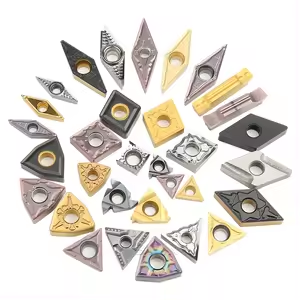
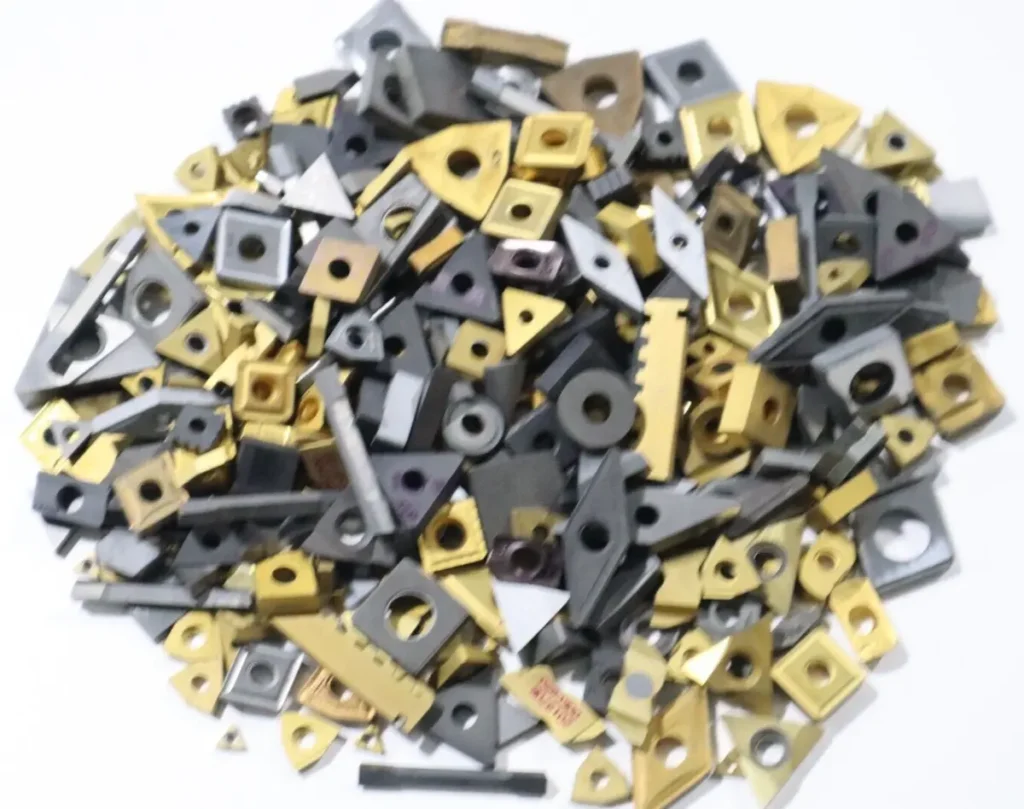

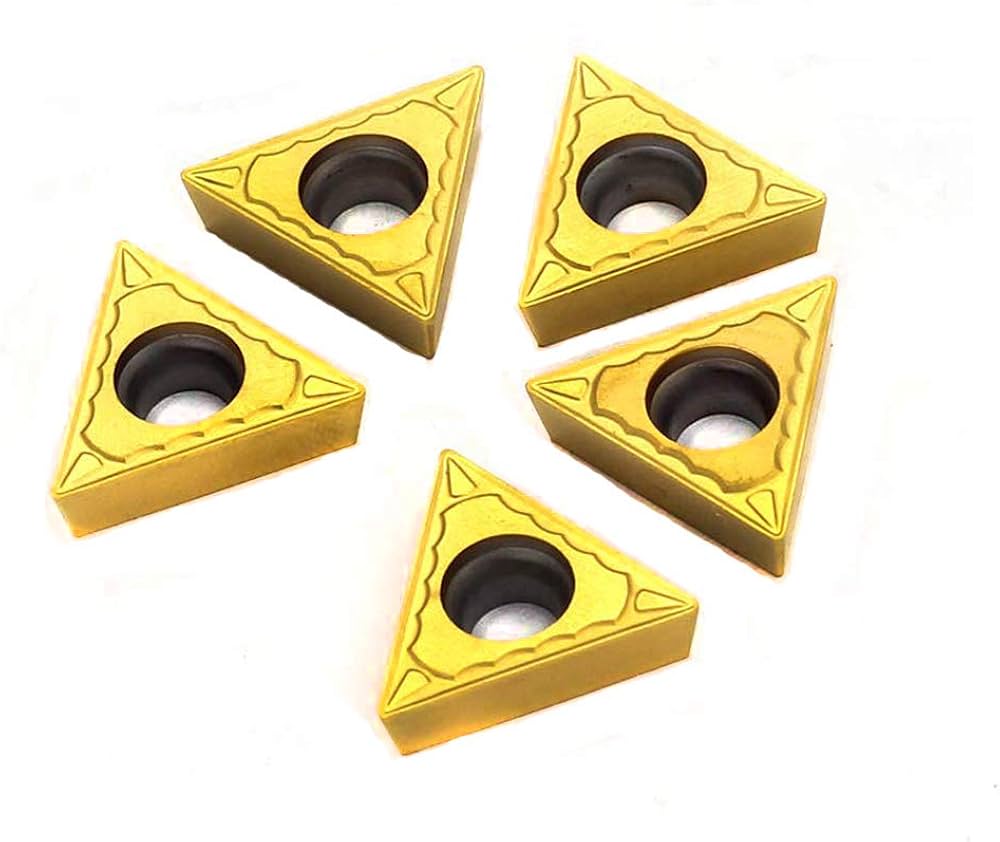
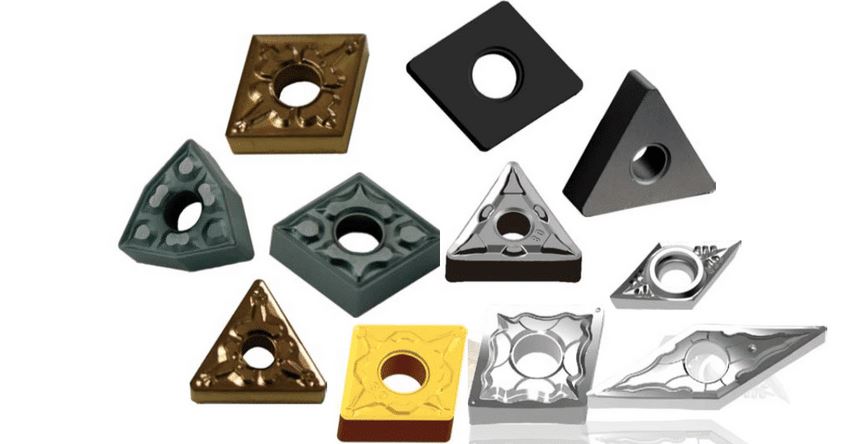
Твердость, прочность и износостойкость
Вот сравнение различных типов твердосплавных пластин с точки зрения твердости, прочности и износостойкости:
| Тип вставки | Твердость (HRA) | Прочность (МПа) | Износостойкость |
|---|---|---|---|
| Токарные вставки | 92 | 3000 | Высокая |
| Фрезерные вставки | 91 | 2800 | От среднего до высокого |
| Буровые вставки | 93 | 3100 | Очень высокий |
| Вставки для обработки канавок | 90 | 2700 | Высокая |
| Резьбонарезные вставки | 92 | 2900 | Высокая |
| Вставки для обработки деталей | 91 | 2750 | От среднего до высокого |
| Паяные вставки | 89 | 2600 | Средний |
| Индексируемые вставки | 92 | 3000 | Высокая |
| Вставки с покрытием | 94 | 3200 | Очень высокий |
| Вставки без покрытия | 88 | 2500 | Средний |
Спецификации, размеры, формы, стандарты
Твердосплавные вставки бывают различных спецификаций, размеров, форм и соответствуют международным стандартам. Вот подробный обзор:
| Спецификация | Размер (мм) | Форма | Стандарт |
|---|---|---|---|
| ISO P | 10-25 | Круглые, квадратные, треугольные, бриллиантовые | ISO 1832 |
| ISO M | 12-30 | Круглые, квадратные, треугольные, бриллиантовые | ISO 1832 |
| ISO K | 8-20 | Круглые, квадратные, треугольные, бриллиантовые | ISO 1832 |
| ANSI C | 9-22 | Круглые, квадратные, треугольные, бриллиантовые | ANSI B212.5 |
| ANSI M | 11-26 | Круглые, квадратные, треугольные, бриллиантовые | ANSI B212.5 |
| JIS B | 10-24 | Круглые, квадратные, треугольные, бриллиантовые | JIS B 4052 |
| DIN | 8-23 | Круглые, квадратные, треугольные, бриллиантовые | DIN 4987 |
Поставщики и ценовая политика
Выбор правильного поставщика и понимание ценообразования очень важны для принятия обоснованных решений. Вот сравнение:
| Поставщик | Диапазон цен (за вставку) | Регион | Рейтинг качества |
|---|---|---|---|
| Цементированный карбид из Чжучжоу | $2 – $15 | Китай | Высокая |
| Sandvik Coromant | $10 – $50 | Глобальная | Очень высокий |
| Kennametal | $8 – $45 | Глобальная | Очень высокий |
| Sumitomo Electric | $9 – $40 | Глобальная | Высокая |
| ИСКАР | $12 – $55 | Глобальная | Очень высокий |
| Mitsubishi Materials | $10 – $48 | Глобальная | Высокая |
| YG-1 | $7 – $35 | Южная Корея | Высокая |
| TaeguTec | $6 – $33 | Южная Корея | Высокая |
| Tungaloy | $11 – $52 | Глобальная | Очень высокий |
| Kyocera | $9 – $38 | Глобальная | Высокая |
Выбор правильного Китай Твердосплавные вставки
При выборе подходящей твердосплавной вставки необходимо учитывать несколько факторов. Вот руководство, которое поможет вам выбрать правильный вариант:
| Фактор | Соображения |
|---|---|
| Обрабатываемый материал | Твердость, прочность и тип материала (например, сталь, алюминий, дерево). |
| Операция обработки | Тип операции (например, точение, фрезерование, сверление) |
| Форма вставки | Зависит от требуемого реза и траектории инструмента (например, круглый, квадратный, треугольный) |
| Покрытие | Покрытие и отсутствие покрытия в зависимости от материала и скорости работы |
| Размер вставки | Размер пластины относительно держателя инструмента и требуемая глубина резания |
| Скорость и подача | Определяет подходящую марку вставки для соответствия рабочим параметрам |
| Стоимость | Бюджетные ограничения в сравнении с производительностью и долговечностью вставки |
| Репутация поставщика | Надежность и гарантия качества, предоставляемые поставщиком |
Преимущества и ограничения
У каждого типа твердосплавных пластин есть свои плюсы и минусы. Давайте сравним:
| Тип | Преимущества | Ограничения |
|---|---|---|
| Токарные вставки | Универсальный, подходит для различных токарных работ | Может быстрее изнашиваться при работе с очень твердыми материалами |
| Фрезерные вставки | Отлично подходит для создания точных форм и пазов | Может быть дороже, чем токарные пластины |
| Буровые вставки | Высокая точность, отлично подходит для глубоких отверстий | Может потребоваться специализированное оборудование |
| Вставки для обработки канавок | Идеально подходит для создания точных пазов и разрезов | Ограничено специфическими операциями фрезерования |
| Резьбонарезные вставки | Точное создание резьбы, высококачественная отделка | Может быть сложным в использовании для новичков |
| Вставки для обработки деталей | Эффективность при разделке, уменьшение отходов материала | Ограничено операциями по разделке |
| Паяные вставки | Прочные и долговечные, отлично подходят для работы в условиях высоких нагрузок | Не так универсальны, как сменные пластины |
| Индексируемые вставки | Многочисленные режущие кромки, экономичность с течением времени | Первоначальная стоимость может быть выше, требуются совместимые держатели инструментов |
| Вставки с покрытием | Повышенная износостойкость, идеально подходит для высокоскоростных операций | При неправильном использовании покрытие может быть повреждено |
| Вставки без покрытия | Экономичность для общего применения | Может быстрее изнашиваться при работе с более твердыми материалами |

ЧАСТО ЗАДАВАЕМЫЕ ВОПРОСЫ
Что такое твердосплавные вставки из Китая?
Твердосплавные пластины китайского производства, известные своим высоким качеством и экономичностью, используются в различных процессах обработки для резки, придания формы и сверления материалов.
Как выбрать подходящую твердосплавную пластину?
Учитывайте обрабатываемый материал, тип операции, форму пластины, покрытие, размер, скорость и подачу, стоимость и репутацию поставщика.
Каковы преимущества вставок с покрытием по сравнению со вставками без покрытия?
Пластины с покрытием обладают повышенной износостойкостью и идеально подходят для высокоскоростных операций. Пластины без покрытия экономичны и подходят для общего применения, но могут быстрее изнашиваться при работе с более твердыми материалами.
Можно ли использовать твердосплавные пластины для всех материалов?
Твердосплавные пластины универсальны и могут использоваться для обработки широкого спектра материалов, включая металлы, пластики и древесину. Однако конкретный тип пластины следует выбирать в зависимости от твердости материала и требуемой операции обработки.
В чем разница между токарными и фрезерными пластинами?
Токарные пластины используются для общих токарных операций, а фрезерные пластины применяются на фрезерных станках для создания канавок, пазов и других форм. Каждая из них имеет особую конструкцию, предназначенную для выполнения соответствующих операций.
Понимая эти детали, вы сможете принять обоснованное решение при выборе твердосплавных вставок для обработки. Независимо от того, работаете ли вы в автомобильной, аэрокосмической или любой другой отрасли, правильно подобранная твердосплавная вставка может сыграть решающую роль в достижении точности и эффективности.

